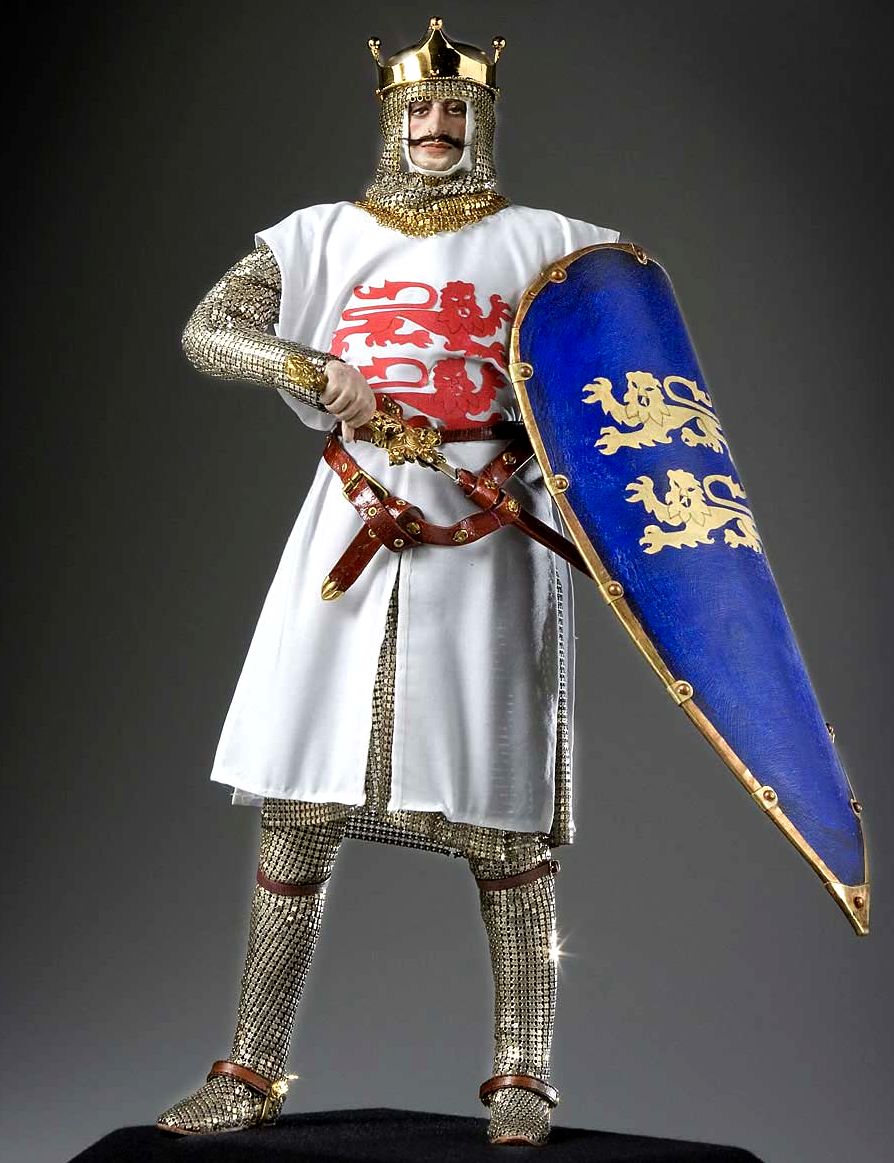
William I (c. 1028 – 9 September 1087), usually known as William the Conqueror and sometimes William the
Bastard, was the first Norman King of England, reigning from 1066 until his death in 1087. A descendant of Rollo, he was Duke of Normandy from 1035 onward. After a long struggle to establish his power, by 1060 his hold on Normandy was secure, and he launched the Norman conquest of England six years later. The rest of his life was marked by struggles to consolidate his hold over England and his continental lands and by difficulties with his eldest son.
William was the son of the unmarried Robert I, Duke of Normandy, by Robert's mistress Herleva. His illegitimate status and his youth caused some difficulties for him after he succeeded his father, as did the anarchy that plagued the first years of his rule. During his childhood and adolescence, members of the Norman aristocracy battled each other, both for control of the child duke and for their own ends. In 1047 William was able to quash a rebellion and begin to establish his authority over the duchy, a process that was not complete until about 1060. His marriage in the 1050s to Matilda of Flanders provided him with a powerful ally in the neighbouring county of Flanders. By the time of his marriage, William was able to arrange the appointment of his supporters as bishops and abbots in the Norman church. His consolidation of power allowed him to expand his horizons, and by 1062 William secured control of the neighbouring county of Maine.
In the 1050s and early 1060s William became a contender for the throne of England, then held by the childless Edward the Confessor, his first cousin once removed. There were other potential claimants, including the powerful English earl Harold Godwinson, who was named the next king by Edward on the latter's deathbed in January 1066. William argued that Edward had previously promised the throne to him and that Harold had sworn to support William's claim. William built a large fleet and invaded England in September 1066, decisively defeating and killing Harold at the Battle of Hastings on 14 October 1066. After further military efforts William was crowned king on Christmas Day 1066, in London. He made arrangements for the governance of England in early 1067 before returning to Normandy. Several unsuccessful rebellions followed, and by 1075 William's hold on England was mostly secure, allowing him to spend the majority of the rest of his reign on the continent.
William's final years were marked by difficulties in his continental domains, troubles with his eldest son, and threatened invasions of England by the Danes. In 1086 William ordered the compilation of the Domesday Book, a survey listing all the landholdings in England along with their pre-Conquest and current holders. William died in September 1087 while leading a campaign in northern France, and was buried in Caen. His reign in England was marked by the construction of castles, the settling of a new Norman nobility on the land, and change in the composition of the English clergy. He did not try to integrate his various domains into one empire but instead continued to administer each part separately. William's lands were divided after his death: Normandy went to his eldest son, Robert Curthose, and his second surviving son, William Rufus, received England.
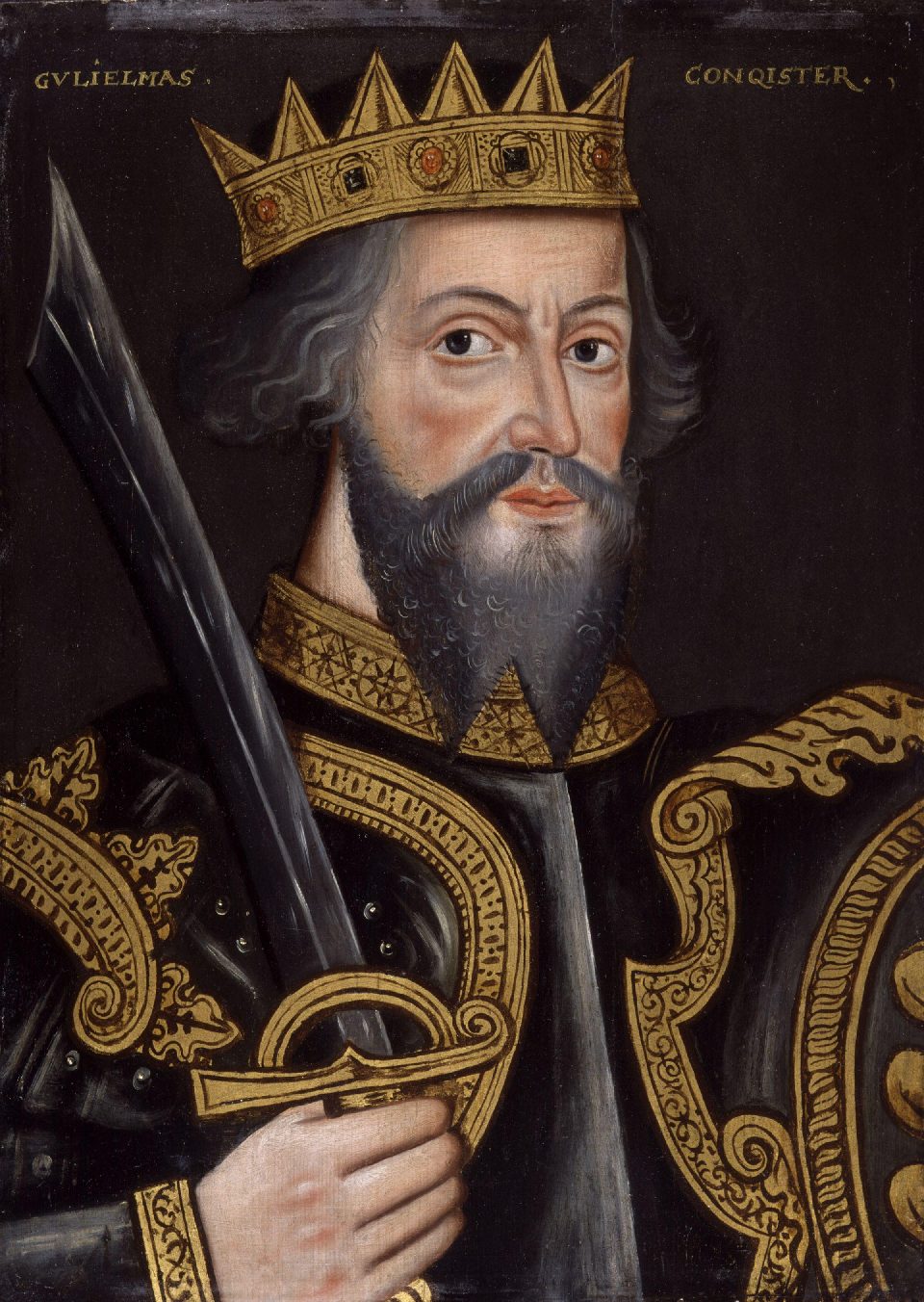
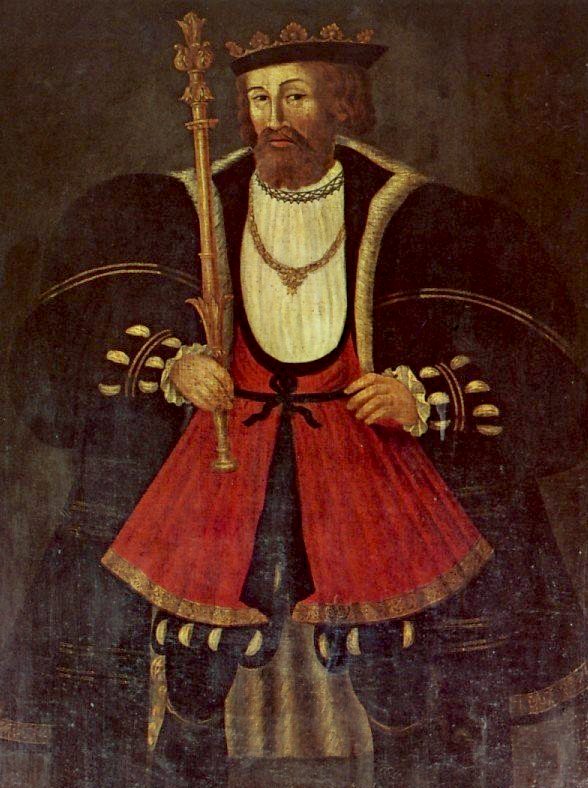
THE BATTLE OF HASTINGS
After defeating Harald Hardrada and Tostig, Harold left much of his army in the north, including Morcar and Edwin, and marched the rest south to deal with the threatened Norman invasion. He probably learned of William's landing while he was travelling south. Harold stopped in London, and was there for about a week before marching to Hastings, so it is likely that he spent about a week on his march south, averaging about 27 miles (43 kilometres) per day, for the distance of approximately 200 miles (320 kilometres). Although Harold attempted to surprise the Normans, William's scouts reported the English arrival to the duke. The exact events preceding the battle are obscure, with contradictory accounts in the sources, but all agree that William led his army from his castle and advanced towards the enemy. Harold had taken a defensive position at the top of Senlac Hill (present-day Battle, East Sussex), about 6 miles (9.7 kilometres) from William's castle at Hastings.
The battle began at about 9 am on 14 October and lasted all day, but while a broad outline is known, the exact events are obscured by contradictory accounts in the
sources. Although the numbers on each side were about equal, William had both cavalry and infantry, including many archers, while Harold had only foot soldiers and few, if any,
archers. The English soldiers formed up as a shield wall along the ridge and were at first so effective that William's army was thrown back with heavy casualties. Some of William's Breton troops panicked and fled, and some of the English troops appear to have pursued the fleeing Bretons until they themselves were attacked and destroyed by Norman cavalry. During the Bretons' flight, rumours swept through the Norman forces that the duke had been killed, but William succeeded in rallying his troops. Two further Norman retreats were feigned, to once again draw the English into pursuit and expose them to repeated attacks by the Norman cavalry. The available sources are more confused about events in the afternoon, but it appears that the decisive event was Harold's death, about which differing stories are told. William of Jumièges claimed that Harold was killed by the duke. The Bayeux Tapestry has been claimed to show Harold's death by an arrow to the eye, but that may be a later reworking of the tapestry to conform to 12th-century stories in which Harold was slain by an arrow wound to the head.
Harold's body was identified the day after the battle, either through his armour or marks on his body. The English dead, who included some of Harold's brothers and his housecarls, were left on the battlefield. Gytha, Harold's mother, offered the victorious duke the weight of her son's body in gold for its custody, but her offer was
refused. William ordered that Harold's body was to be thrown into the sea, but whether that took place is unclear. Waltham Abbey, which had been founded by Harold, later claimed that his body had been secretly buried there.
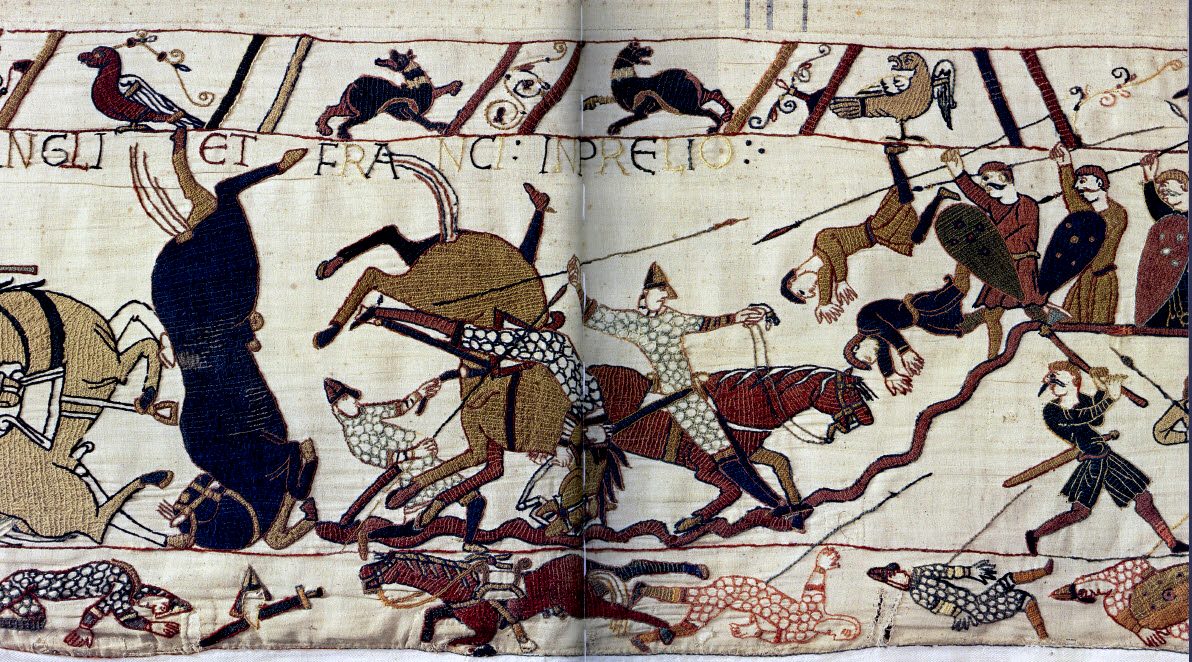
DOMESDAY
(DOOMSDAY) BOOK
At Christmas 1085, William ordered the compilation of a survey of the landholdings held by himself and by his vassals throughout his kingdom, organised by counties. It resulted in a work now known as the
Domesday Book. The listing for each county gives the holdings of each landholder, grouped by owners. The listings describe the holding, who owned the land before the Conquest, its value, what the tax assessment was, and usually the number of
peasants, ploughs, and any other resources the holding had. Towns were listed separately. All the English counties south of the
River Tees and River Ribble are included, and the whole work seems to have been mostly completed by 1 August 1086, when the Anglo-Saxon Chronicle records that William received the results and that all the chief magnates swore the Salisbury Oath, a renewal of their oaths of allegiance. William's exact motivation in ordering the survey is unclear, but it probably had several purposes, such as making a record of feudal obligations and justifying increased
taxation.
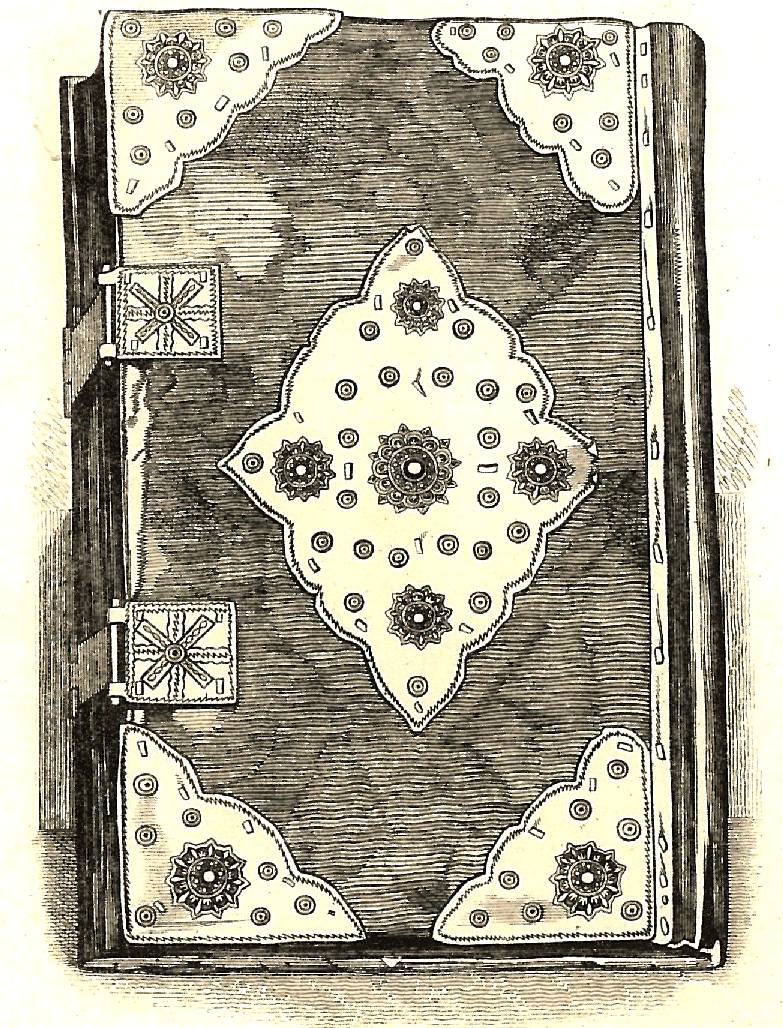
DESCRIPTION
OF ENGLAND - The Domesday Book was commissioned in December 1085 by William the Conqueror, who invaded England in
1066 at Hastings in East Sussex. The first draft was completed in August 1086 and contained records for 13,418 settlements in the English counties south of the rivers Ribble and Tees (the border with Scotland at the time).
The original Domesday Book has survived over 900 years of English history and is currently housed in a specially made chest at The National Archives in Kew, London. This site has been set up to enable visitors to discover the history of the Domesday Book, to give an insight into life at the time of its compilation, and provide information and links on related topics. The
Domesday Book is as important as the Magna Carta in the passage of British
law to create a true Democracy. That will never happen until the rules by
which we are governed are cast in stone in a Written Constitution, where
the full force of the Law is available to every man, woman and child.
LINKS
& REFERENCE
http://www.english-heritage.org.uk/





